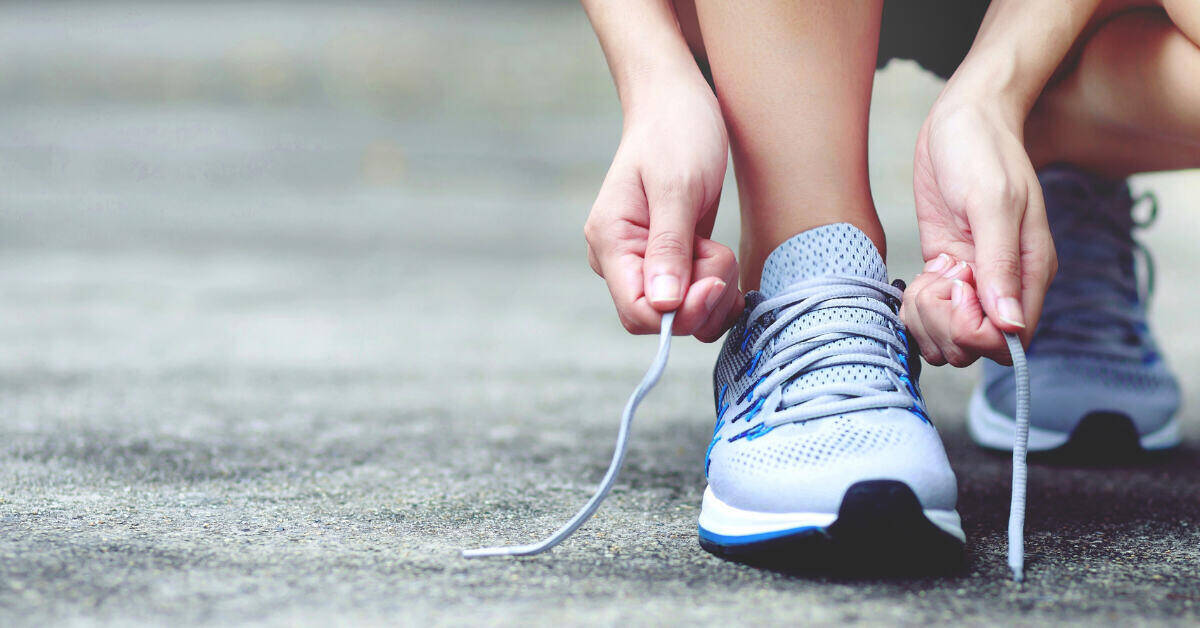Hiking is a popular outdoor activity that allows people to explore and enjoy nature while also getting some exercise. One question is on your mind right now-can you use your running shoes for hiking if you don’t have an alternative? In this post, we’ll take a closer look at whether running shoes are good for hiking and discuss the pros and cons of using them on the trail.
Are running shoes good for hiking?
Generally speaking, trail running shoes are not the best option for hiking because they lack the necessary features to protect your feet and provide stability in various terrains. However, running shoes are light and flexible, making them great for hiking on flat surfaces.

Hiking in running shoes
Let’s discuss the features of running shoes:
1. Traction
Running shoes generally have a smaller and shallower tread than hiking shoes, which could make them more prone to slipping on wet or muddy surfaces. Good traction is important in hiking as it prevents slipping in rough terrains, especially when it is rainy. We recommend using proper hiking boots if you plan to hike on rugged terrain.
2. Comfort
Running shoes have softer and more flexible soles than hiking boots, making them comfortable on flat surfaces. They may not provide enough cushioning when walking on rough terrain. Also, the softer sole can tire the feet quickly when carrying a heavy backpack.
Related: Are Vans Good For Hiking
3. Support
Trail running shoe soles are not as sturdy as hiking shoe soles; therefore, they do not provide the same level of foot support. This lack of support can lead to tired and sore feet when hiking on rough terrain for a long time.
4. Breathability
Running shoes are lightweight and breathable, which can benefit hikers who want to keep their feet cool in warm weather. However, they may not provide enough insulation in cold weather, leaving your feet chilly.
5. Durability
Trail running shoes are not as durable as hiking boots, which means they may not last as long when used for hiking. If you plan to go on multiple hikes in a year, we recommend investing in proper hiking boots that can last a long time.
Pros and cons of hiking in running shoes
Let’s discuss the pros and cons of running shoes
Pros
– Lightweight: Running shoes are typically lighter than hiking boots, making them great for hikers who want to move quickly.
– Flexible: Running shoes are more flexible than hiking boots, which can help you maintain a natural stride while walking on flat surfaces.

Cons
– Poor traction: Running shoes have a smaller and shallower tread than hiking boots. This makes them more prone to slipping on wet or muddy surfaces.
– Lack of support: The softer sole of running shoes does not provide the same level of support to the feet as hiking boots.
– Not durable: Running shoes are not as durable as hiking boots.
Related: Can You Hike In Blundstones?
How to break in running shoes
Comfort is vital when hiking, and it is important to give your running shoes time to break in before you hit the trail. Here are several tips on how to break in your running shoes:
· Wear them around your house first
Start by wearing them for short periods at home so they can conform to the shape of your feet.
· Start with short hikes
Once your running shoes start feeling comfortable, take them on short hikes around your neighborhood or local park. This will allow you to test them out in different environments and before tackling a long hike.
· Use insoles or padding
If your feet still feel uncomfortable after breaking in your running shoes, you can use extra cushioning like arch supports or padded insoles. This will help provide additional support and comfort for your feet on the trail.
· Heat the shoes using a hairdryer
Applying some gentle heat to your running shoes can help them mold more quickly to the shape of your feet. Use a hairdryer on low heat to heat up the material, then put your shoes on and walk around in them until they cool down.
Remember, if your feet start feeling uncomfortable or sore after a few hikes in your trail running shoes, it may be time to invest in a good pair of hiking boots.
Related: Can You Hike In Doc Martens?
A brief history of running shoes
Running shoes have a long and interesting history dating to ancient civilizations. The earliest examples of running shoes date back to around 3,500 BC and were made from animal hide. They were designed to protect the feet from rough terrain and provide some level of cushioning.
In the early 20th century, running shoes began to evolve into the modern form we know today. The first rubber-soled running shoe was invented in 1839 by Charles Goodyear, but it wasn’t until the 1920s that the first modern running shoes with rubber soles and canvas uppers were produced. These shoes were designed to provide better traction and cushioning for runners.
In the 1960s, a new type of trail running shoe was developed that featured a foam sole, which provided even more cushioning and support for runners. This design was further refined in the 1970s with the “waffle sole” running shoe, which used a waffle-patterned sole to provide even more traction and stability.

Newer designs
In the 1980s and 1990s, running shoe technology continued to advance with the introduction of new materials and designs. Shoes began to feature air-cushioned soles, gel-cushioned soles, and even special designs for different types of running like trail running and marathon running.
In recent years, running shoe technology has continued to evolve with the introduction of new materials such as carbon fiber and advanced manufacturing techniques. Many modern running shoes also feature specialized designs for different types of runners, such as those with flat feet or high arches.
Tips for hiking in running shoes
Here are some proven tips for hiking in running shoes:
· Choose the right running shoes
When choosing a pair of running shoes for hiking, it is important to choose ones that are lightweight and provide adequate cushioning and support. Look for features such as a good grip on the sole and materials that will help keep your feet cool and dry.
· Wear good socks
Wearing thick, comfortable socks can help provide an extra layer of cushioning and protection for your feet. Look for socks made from materials such as merino wool designed to keep your feet cool and dry while hiking.
· Take breaks
If you are feeling discomfort or pain in your feet, take regular breaks from walking to give your feet a rest. This will help prevent any blisters or soreness from developing and allow your feet to recover during the hike.
· Take care of your feet
Ensure you moisturize your feet regularly and always wear socks when wearing the shoes. This will help keep your feet comfortable and reduce any friction on the trail.
· Wear a good pair of insoles
Insoles provide an extra layer of cushioning and support for your feet while hiking, which can help to prevent discomfort or pain during long hikes. Look for insoles designed specifically for running shoes as they provide the most cushioning and support.
· Replace your shoes regularly
The more you wear running shoes, the less effective they become at providing cushioning and support. Therefore, it is important to replace them regularly.
In conclusion, while running shoes can be used for short hikes on flat surfaces, it is important to consider their lack of support before embarking on a longer or more difficult hike. If you start feeling discomfort or pain during your hike, it may be time to invest in a good pair of hiking boots.
